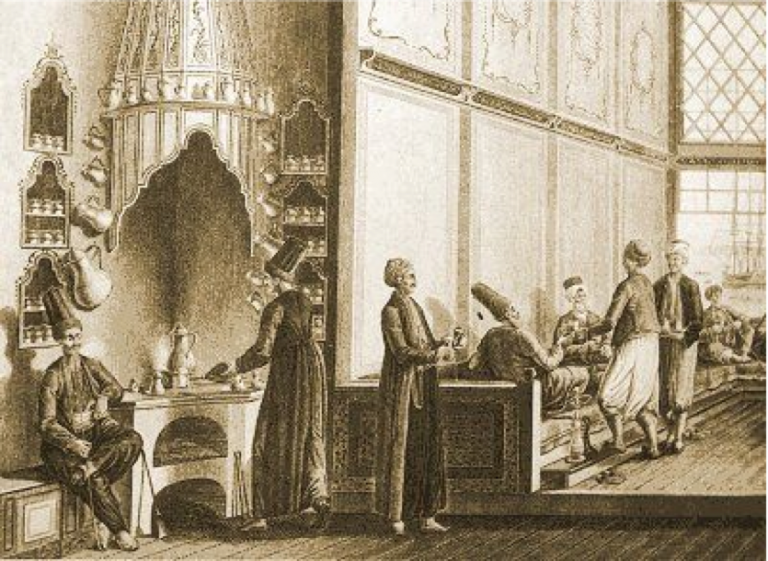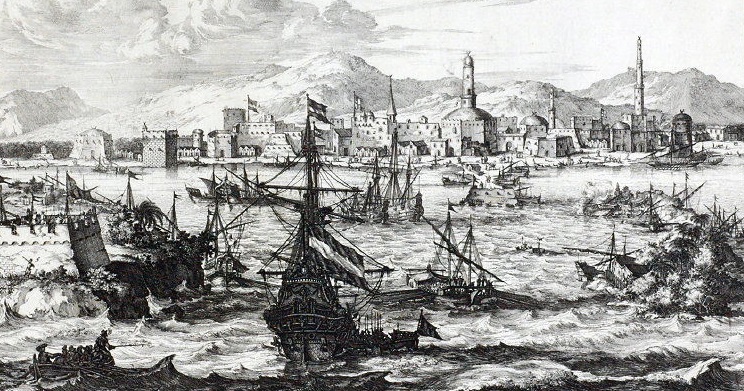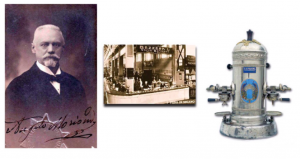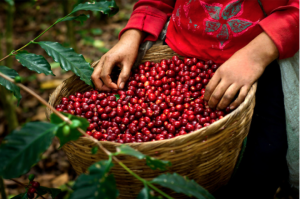In Arabic language
It means wine, and it comes from the verb qaha - go - appetite for food. Some of them said it came from the Kaffa region in Ethiopia. The word turned from Qaha in Arabic to cave in Turkish, and in Italian they called it caffè. Then it was introduced to the English language in 1582 AD through German Koffie.

With a number of legends revolving around the discovery of coffee, the method of discovering it still has different legends. The story of Al-Khalidi “the shepherd ” may be the most famous, who noticed that his sheep became active and did not sleep at night after eating a certain plant. And some of them said that they were discovered from Yemen by Omar Al-Shazly (Abu Al-Hassan Al-Shazly) of the Sufis, who was famous as a healer in the Yemeni village “Mocha” .
Before he was a healer, he was exiled from the Yemeni village of Mocha. When he was hungry, he found cherries near Wasab in Yemen and began to eat them. He found them sore. He decided to roast them and they became tough, then tried to boil them to soften, but they brought out a brown liquid with an aromatic smell. He drank from it and felt energy and health for days, and the story of the “magic drink” reached the village of Mocha, so they allowed him to return and made him a sheik. For this reason, you may see some, even nowadays, calling it "Al-Shadhiliyya".
Fifteenth Century
The first export of coffee was from Ethiopia to Yemen, where the first cultivation of the coffee plant took place in Yemen. The first export of coffee was from Ethiopia to Yemen, where the first cultivation of the coffee plant took place in Yemen. Yemen was also considered in that era the main center for coffee production in the world, and it was the first documented evidence of the emergence of coffee in Yemen among the Sufis, so coffee was associated with Islam and is considered the “Islamic drink” because the Sufis use it to strengthen them in worship .
The first process of Roast and the preparation of coffee was in the year 1414 AD. Coffee reached Makkah and became known there due to its being the Islamic alternative to wine.
Opening of Cafes

Wherever Islam spread, coffee spread at the beginning of the fifteenth century and reached Egypt and the Levant, Where cafes were opened in Cairo around Al-Azhar University and in Syria and Mecca (there are no documented dates for the simultaneous opening of cafes in this period). In the era of the Ottoman Empire in Turkey, the first “historically recorded” café was opened in 1554 AD, Kiva Han, which was opened by two Syrians, one from Aleppo and the other from Damascus.
Cafés became a place for exchanging knowledge between imams and students, and poems also spread and began to become more popular. Note that the first appearance of coffee shops in history was in Makkah, and fatwas were issued by different sheikhs that went from Makkah to different places prohibiting coffee in 1511 AD due to its effect on the body and its comparison to alcohol. . But coffee lovers fought the decision, and after scientists were sure that it did not lose the mind, fatwas were issued to permissible it later.
In the Ottoman era, a new way of preparing coffee was discovered, “Turkish coffee” and the ruler admired it. It quickly spread in the Ottoman Empire and became served in cafes, and the person who prepared it was called Kahfji.
Sixteenth century

In this era, coffee began to move to Europe through the Ottoman Empire and through Yemen directly from the port of Mocha.
Information: The name Mocha was derived from the Yemeni port of Mocha, “Mocha means one of the coffee strains, not a drink.”
In 1657 AD, Mr. Thevenot, after his tour in the Middle East, took coffee beans and taught the French how to prepare coffee. This was the first acquaintance of the French with coffee.
The first appearance of coffee cultivation in India was in the year 1670 AD, through Baba Bodan, who stole 7 coffee beans from the port of Mocha when he was in Hajj and was returning to his country and planted them in the Chikmagalur hills.
Coffee spread in Austria after the loss of the Muslims in the Battle of Vienna in 1683 AD, where the Austrians seized the spoils of the Muslims, which included pots for preparing Turkish coffee and coffee bags, which they thought were camel food. Until one of the warriors, Jerzy Franciszek Kulczycki, who spent two years in captivity with the Turks, knew what the bags were and took them. Among the spoils was the opening of the first cafe in Vienna. Although there is a dispute whether the first to open a café in Vienna was the Kolczycki or the Armenian Johannes Diodato, But what we do know for sure is that the credit for the Austrian tradition of adding milk to coffee in drinking coffee goes back to Kulczycki.

The seventeenth century
The Dutch cultivated some types of coffee, which were purchased from the port of Mocha in 1719 AD and were grown in the Java colony in Indonesia. Thus, we have a type of coffee called Java.
Coffee arrived in the United States in the year 1720 AD by Captain Gabriel de Clieu, who was sent by the French King Louis to the island of Martinique in the Caribbean Sea, and spread to the island of Haiti, Mexico and others. In the year 1727 AD, the King of Portugal sent Francisco de Melo Palheta to take coffee beans from the French and by his own means he was able to acquire them and planted them in Brazil. And now Brazil is the largest exporter of coffee in the world.
Espresso Story

In the year 1884 AD, Angelo Moriondo was the first innovator of the espresso machine. In contrast to the espresso machines used now, the tool was large and did not prepare the espresso as required. After 17 years, Luigi Bezzera made some modifications to it, such as steam pressure, and took a patent on it in 1901 under the title “Innovations in the machinery to prepare and immediately serve coffee beverages” inventing an instant coffee drink machine. In 1905, the Italian Desidero Pavoni purchased the patent and began manufacturing it commercially.
Instant Coffee

It was invented in 1881 by Alphonse Allais in France. In 1890 AD in New Zealand, David Strang registered a patent on it and began selling it under the name Strang’s Coffee and called his patent “Dry Hot-Air”, also attributed to the Japanese scientist Satori Kato in 1901 AD, who presented it in Buffalo and New York at one of the exhibitions. George Constant Louis Washington developed his own instant coffee and began selling it commercially in 1910.
In 1938, the Swiss company Nestlé established “Nescafe” as a brand and began selling it commercially in Switzerland. Nescafe was founded when the Brazilian government contacted Nestle to find a solution to its surplus coffee.
The first coffee wave
Focused on mass production, sacrificing taste and quality for profit. Its pioneers were Nescafe, Maxwell House and Folgers, who produced this wave of instant coffee.
The second wave of coffee
In 1966 the pioneers of this wave were Starbucks and Peet's Coffee. The second wave contributed to the introduction of espresso to the world and its spread and the provision of drinks such as: latte, cappuccino, americano, mocha and others. Starbucks was the pioneer in the second wave, where many around the world resorted to following Starbucks steps as a structural project Business Model, which focuses on the expansion aspect by increasing the number of branches, which leads to a reduction in the ability to control the quality of coffee, which leads to its lack of quality and continuity in taste.

The Third wave of coffee
The third wave was mentioned in 2002 . It is a movement to raise the quality of coffee that includes the quality of cultivation and production, harvesting, processing, fresh roasting, and preparing coffee with high standards of quality. Transparency is an important aspect of specialty coffee as the barista can give you information such as: the history of the roasting date, from which region, and the method of processing method .
The third wave is called specialty coffee because coffee is rated above 80 out of 100 by International Coffee Organization accredited raters. Various methods are used in its preparation such as drawing tools, and distillation tools such as Chemex, V60 and others.
And coffee to this day is still mixed with new hands and in different ways.. So what's next?